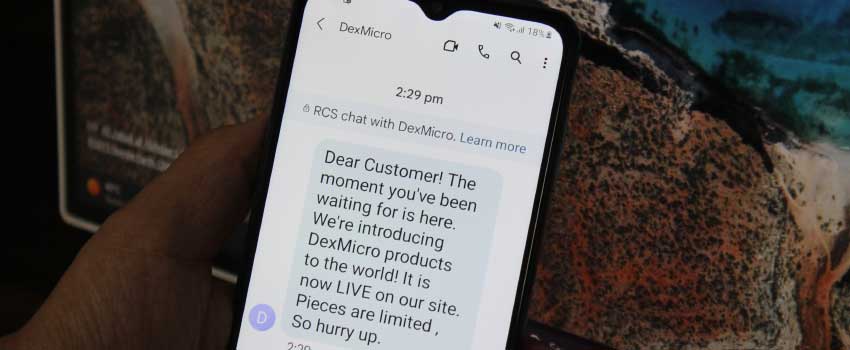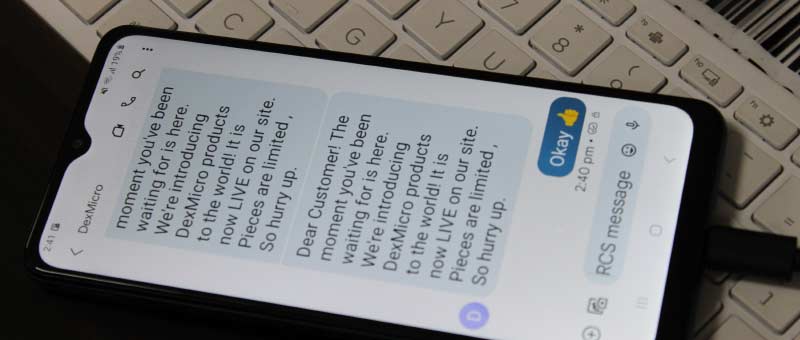Regulations and Guidelines for Using SMS Software
SMS software is a powerful tool for businesses to communicate with their customers. However, there are regulations and guidelines that businesses must adhere to when using SMS software to ensure that they are not violating any laws or infringing on the privacy of their customers. Some regulations and guidelines for using SMS software:-
- 01 TCPA
regulations
The Telephone Consumer Protection Act (TCPA) is a federal law that regulates telemarketing calls, including SMS messages. The TCPA requires businesses to obtain prior express written consent before SMS messages to consumers for marketing purposes. This means that businesses must obtain written consent from their customers before sending them messages. The consent must be clear and conspicuous, and it must include a statement that the customer is giving permission to receive SMS messages for marketing purposes. Provide an opt-out mechanism in their SMS messages, such as a reply message with the word "STOP," to allow customers to easily unsubscribe.
- 02 CAN-SPAM Act
regulations
The CAN-SPAM Act is a federal law that regulates commercial emails, including SMS messages that contain advertising or promotional material. The CAN-SPAM Act requires businesses to include certain information in their SMS messages, such as the name and contact information of the sender, a clear and conspicuous subject line that accurately reflects the content of the message, and an opt-out mechanism that allows customers to easily unsubscribe from future SMS messages. The CAN-SPAM Act also prohibits businesses from using false or misleading information in their SMS messages, such as deceptive subject lines or misleading header information.
- 03 GDPR
regulations
The General Data Protection Regulation (GDPR) is a European Union regulation that governs the processing of personal data of EU residents. The GDPR applies to businesses that process personal data of EU residents, including SMS messages that contain personal data. The GDPR requires businesses to obtain explicit consent from their customers before processing their personal data, including their phone numbers. The consent must be freely given, specific, informed, and unambiguous. The GDPR also requires businesses to provide customers with the right to access, rectify, erase, and restrict the processing of their personal data.
- 04 CTIA
guidelines
The CTIA is a trade association that represents the wireless communications industry in the United States. The CTIA has developed guidelines for businesses that use SMS software to communicate with their customers. The guidelines cover a wide range of topics, such as obtaining consent, message content, and opt-out mechanisms. The guidelines recommend that businesses obtain express written consent from their customers before sending them SMS messages, include a clear and conspicuous opt-out mechanism in their SMS messages, and avoid sending messages that contain false or misleading information.
- 05 MMA guidelines
The Mobile Marketing Association (MMA) is an international trade association that represents the mobile marketing industry. The MMA has developed guidelines for businesses that use SMS software to communicate with their customers. The guidelines cover a wide range of topics, such as message content, frequency, and opt-out mechanisms. The guidelines recommend that businesses avoid sending SMS messages that contain spam, fraudulent, or deceptive content, limit the frequency of their SMS messages to avoid annoying customers, and provide an easy and immediate opt-out mechanism for customers who wish to unsubscribe from future SMS messages.
📝 Conclusion: There are regulations and guidelines that businesses must adhere to when using SMS software to communicate with their customers. The TCPA, CAN-SPAM Act, GDPR, CTIA guidelines, and MMA guidelines all provide guidance on how to use SMS software in a way that is legal, ethical, and respectful of customers' privacy. By following these regulations and guidelines, businesses can ensure that their SMS marketing campaigns are effective and compliant with the law.
Measure The Success Of My SMS Marketing Campaigns Using SMS Software
SMS marketing campaigns can be an effective way to reach out to customers and promote products or services. However, measuring the success of these campaigns is essential to understanding whether they are achieving the desired results. Some points on how to measure the success of SMS marketing campaigns using SMS software:-

-
Define your goals and KPIs
Before launching an SMS marketing campaign, it is important to define your goals and key performance indicators (KPIs). Your goals might include increasing sales, generating leads, or building brand awareness. Your KPIs might include the number of opt-ins, the open rate, the click-through rate, the conversion rate, or the ROI. By defining your goals and KPIs, you can track the performance of your SMS marketing campaign and make data-driven decisions.
-
Track opt-ins and opt-outs
One of the most important metrics to track in SMS marketing campaigns is the number of opt-ins and opt-outs. Opt-ins are the number of subscribers who have given permission to receive SMS messages from your brand, while opt-outs are the number of subscribers who have unsubscribed from your SMS list. Tracking these metrics can help you understand the growth or decline of your SMS subscriber list and identify areas for improvement.
-
Monitor open rates
The open rate is the percentage of subscribers who opened your SMS message. Monitoring the open rate can help you understand how effective your SMS message subject lines and timing are. A low open rate might indicate that your subject lines are not engaging enough, or that your SMS messages are being sent at the wrong time.
-
Measure click-through rates
The click-through rate is the percentage of subscribers who clicked on a link in your SMS message. Measuring the click-through rate can help you understand how effective your SMS message content is and whether it is driving subscribers to take action. A low click-through rate might indicate that your SMS message content is not relevant or engaging enough, or that your call-to-action is not clear.
-
Calculate conversion rates
The conversion rate is the percentage of subscribers who took a desired action, such as making a purchase or filling out a form, after clicking on a link in your SMS message. Calculating the conversion rate can help you understand the ROI of your SMS marketing campaign and identify areas for improvement. A low conversion rate might indicate that your landing pages or forms are not optimized for mobile devices or that your offer is not compelling enough.
-
Analyze the ROI
Measuring the return on investment (ROI) of your SMS marketing campaign is essential to understanding whether it is worth the investment. To calculate the ROI, you need to subtract the total cost of the SMS marketing campaign from the total revenue generated by the campaign and divide the result by the total cost of the campaign. Analyzing the ROI can help you make data-driven decisions about future SMS marketing campaigns and allocate your budget more effectively.
-
A/B test your SMS messages
A/B testing is the process of comparing two versions of an SMS message to see which one performs better. By A/B testing your SMS messages, you can identify the most effective strategies for subject lines, message content, timing, and calls-to-action. A/B testing can help you optimize your SMS marketing campaign and achieve better results over time.
📝 Conclusion: In conclusion, measuring the success of SMS marketing campaigns using SMS software requires a combination of tracking opt-ins and opt-outs, monitoring open rates, measuring click-through rates, calculating conversion rates, analyzing the ROI, and A/B testing your SMS messages. By defining your goals and KPIs, tracking key metrics, and making data-driven decisions, you can improve the effectiveness of your SMS marketing campaigns and achieve better results over time.
Troubleshoot Common Issues with SMS Software

SMS (Short Message Service) is a popular way of communicating with people around the world. SMS software is widely used in different industries, such as healthcare, finance, and retail, for communication purposes. SMS software is designed to send and receive text messages using mobile networks, and it can be used for various purposes, such as customer support, marketing, and internal communication.
Despite the popularity of SMS software, there are common issues that users may encounter. Troubleshooting these issues can be challenging, but with the right approach, you can resolve them quickly and efficiently. Some common issues with SMS software and how to troubleshoot them:-
- 01 Network issues:
If the mobile network is down, messages may not send. You can check if there is a network issue by trying to send a message to another number or checking with your network provider.
- 02 Credit
balance:
If you are using a pay-as-you-go service, you may have run out of credit, and the SMS may not send. Check your credit balance to ensure you have enough to send the message.
- 03 Blocked
number:
If the recipient has blocked your number, the SMS will not send. Contact the recipient to check if they have blocked your number.
- 04 Software
issues:
If there are software issues with your SMS software, messages may not send. Check for any updates or contact your software provider for support.